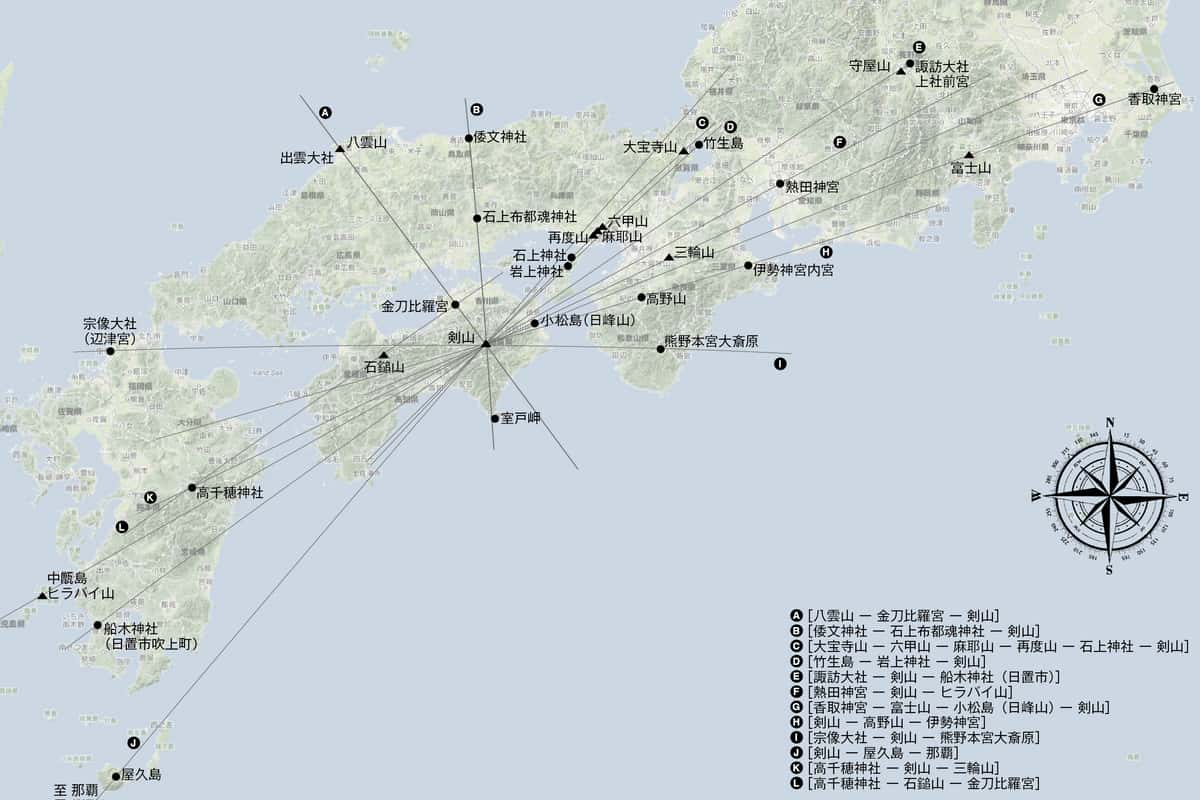Reihou Tsurugisan
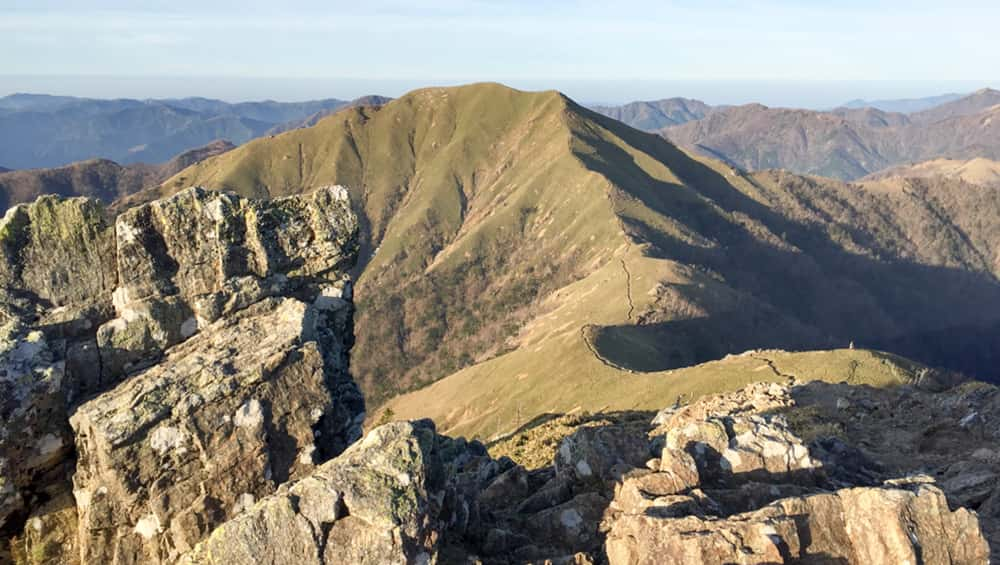
Scenery of the top of Tsurugisan on Horseback
Selected as one of the “100 Famous Mountains of Japan,” Tsurugisan is the second highest mountain in western Japan in Shikoku rising at 1955 meters. The river Iyagawa, featured in “100 of Japan’s Most Famous Waters”, has a Goshinsui (pure holy water source) which flows out from around the summit of Tsurigisan. A view along the ridge from the top of Tsurugisan reveals a vast green meadow, also called “Uma no Sei” or “horse’s back,” surrounded by leaves of a species of bamboo grass called Miyama-kumazasa. The summit of Tsurugisan is enshrined with a shimenawa (sacred straw rope). Next to the Hozoseki near the summit is the Tsurugisan Hongu Hozoseki Shrine. The Tsurugisan Hongu Shrine was built in a direction for people to worship the Hozoseki stone. Also on the mountainside is the Otsurugi Shrine, which has a deity that is a giant 50-meter-high megalith called Otouseki that towers over the shrine. At the foot of the mountain, Tsurugi Shrine was built at Minokoshi, which also serves as the entrance to the trail leading to the summit of Tsurugisan.
Tsurugisan and the Treasures of Solomon
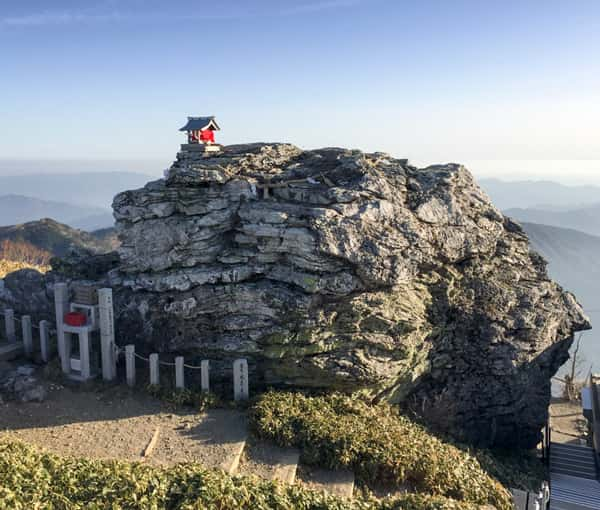
Tsurugisan HozokuraishiTsurugisan, like Ishizuchisan on Shikoku, has been visited by many people as a mecca for ascetic practices since ancient times. The legends of the mountain have been passed down from the surrounding hoary mountain villages. One example of the legends of Tsurugisan can be found at the town hall’s historic records describing the possibility that Solomon’s Treasure is hidden on the mountain. Solomon’s Treasure is the Ark of the Covenant, also known as the Ark, and its contents. According to the Old Testament, the tablets of the Ten Commandments were inside the Ark of the Covenant that Moses carried. Along with the Ark of the Covenant, Aaron’s staff and the Jar of Manna were also placed near the Ark. Considering the fact that these rumors were passed on to generations over centuries, the legends from these mountain villages may give credence to the rumors that Solomon’s Lost Treasures were perhaps brought to Japan.
The Megalith and the Golden Hen
In the distant past, it is said that people who climbed the long, steep mountain path to Tsurugisan first prayed at the cave with an enshrined megalith at Ishio Shrine and then crossed the nearby steep mountain path, Tsuetate-tōge, to reach Tsurugisan. Since Ishio Shrine is dedicated to the megalith, there is no building that resembles a shrine. Legend has it that a golden hen was hidden deep in the cracks of the megaliths, which stretched over dozens of meters. It is known that on top of the Ark of the Covenant in Israel, golden birds in the shape of cherubim with outstretched wings, were placed on top of the Ark facing each other. Does Ishio Shrine’s legend of the golden hen, which is found at the entrance of Tsurugisan, really have a connection with the Ark of the Covenant from Israel?
Jewish Roots in the Area of Tsurugisan
In any case, the area surrounding Tsurugisan seems to have been related to ancient Israel. One shrine called Shinmei Shrine which has stones piled on top of another was built near the foot of Tsurugisan is known as a ritual site. There are five prayer sites facing south that must first be entered by going through the three entrances. The way these stones are arranged and positioned closely resembles ancient Jewish temples, and it is said that the Shinmei Shrine itself may have Jewish roots. Did the ancient Israelites exist together in the background history of Tsurugisan?
Tsurugisan and Awaji Island
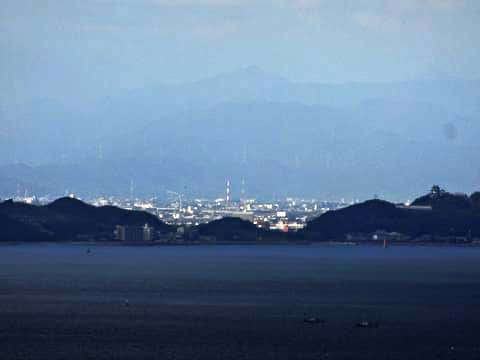
Tsurugisan seen from South AwajiTsurugisan has been recognized for thousands of years as the pride of the Japanese archipelago, and is considered to be a reizan of great significance. Also, Tsurugisan is the highest peak that can be seen from Awaji Island, which is a large island and the surrounding mountains can be seen from all parts of the island. The Rokko Mountains can be seen to the north, and the mountains of Yoshino and Kumano can be seen to the southeast. The mountains of Shikoku Tokushima line the southwestern direction. Tsurugisan is the highest peak among these mountains. If you look at the mountains of Shikoku in the distance from Awaji Island on a clear day, only the peak of one of the mountains that juts out slightly can be seen.
It is thought that according to the book of Isaiah in the Old Testament, the ancient Israelites were searching for the highest peak among the islands in the eastern sea. Therefore, the existence of Tsurugisan must have been discovered when explorers first reached Awaji Island during the period of Japan’s birth as a nation, making the history of Tsurugisan to be extremely old.
Ley Lines Running through Tsurugisan
The proof is in the many ley lines that connect Tsurugisan to other sacred sites. Tsurugisan’s ley lines are in alignment with ancient sacred sites in Japan. Therefore,Tsurugisan itself has been called a reizan since ancient times, and is considered to have been one of the most important mountain landmarks from ancient Japan.
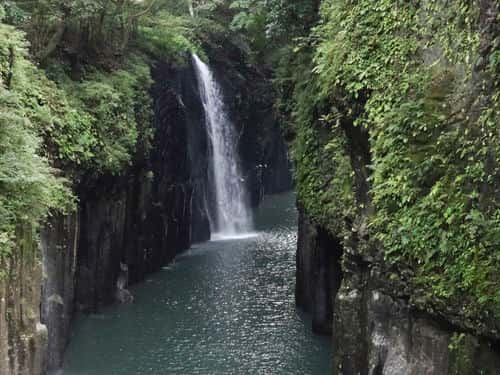
Takachiho Gorge Manai WaterfallFirst, let’s take a look at the connections between Tsurugisan, Takachiho, Kumano Hongu Oyunohara, and Ishizuchisan. Then, on the extension line connecting Takachiho and Tsurugisan, there is Miwayama, which boasts an unparalleled position as the base of an ancient sacred site.
To the west, the ley line connecting Kumano Hongu Oyunohara and Tsurugisan is Munakata Taisha. Both are sacred sites that appear in the Chronicles of Japan from the birth of Japan to the age of the gods. It is assumed that the small mountain in the corner surrounding the Nara Basin became the sacred site of Miwayama, probably due to its importance of the ley line connecting Tsurugisan and Takachiho that Miwayama is located on. During the birth of Japan, events from the Jindai period are thought to have been recorded from the Nansei Islands via Tsushima and Munakata, so there is a possibility that after the deity was enshrined in Munakata, Ishizuchisan and Tsurugisan were used as landmarks to mark Kumano Hongu and Oyunohara as a sacred site through which their ley lines pass.
Like Ishizuchisan, Tsurugisan is connected to Hinominesa in Komatsushima, which could be compared to the Onogoro islands. Hinominesa is important because it falls in line with the ley line connecting Tsurugisan and Mt. Fuji. Later, Katori Shrine was most likely built on that alignment.
Also, Yakumoyama, which is linked with Ameterasu’s younger brother, Susanoo, is said to be the deity of Izumo-taisha, and Kotohiragu, both of which form a straight line with Tsurugisan. Kotohiragu was built in a carefully calculated location to inherit the power of Yakumoyama and Tsurugisan, which, as mentioned above, were also connected to Ishizuchisan and Takachiho. Kotohira-gu was built on a ley line intersection crossing over sacred sites because it was loved by so many people.
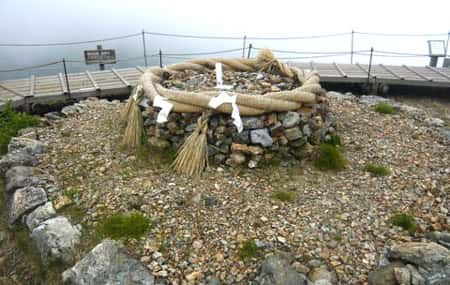
Shimenawa (sacred straw rope) at the top of TsurugisanLater during the reign of Emperor Sojin, the Motoise Pilgrimage had also started, and Tsurugisan once again became the focus of secret attention because it was linked on a ley line to all the pilgrimage sites of the Motoise pilgrimage. This may have been a message to future generations that Tsurugisan was an important treasure house associated with Solomon’s sacred treasures. In any case, Tsurugisan was considered important from the time of Japan’s birth as a nation. Especially after the 1st century B.C, the reizan became a new focus of attention and set the stage for the state of Yamataikoku due to the possible existence of Solomon’s treasure.
The importance of the locations for ley lines are attributed to Tsurugisan’s development can also be verified from the ley lines related to Motoise. All of the Motoise pilgrimage sites are located on ley lines that originated from Tsurugisan. This not only implies that the locations of the pilgrimage sites were carefully selected in relation to Tsurugisan, but also suggests that Tsurugisan was the final destination of the Motoise pilgrimage. Thus, Tsurugisan was an extremely important landmark for these ancient spiritually connected people.

